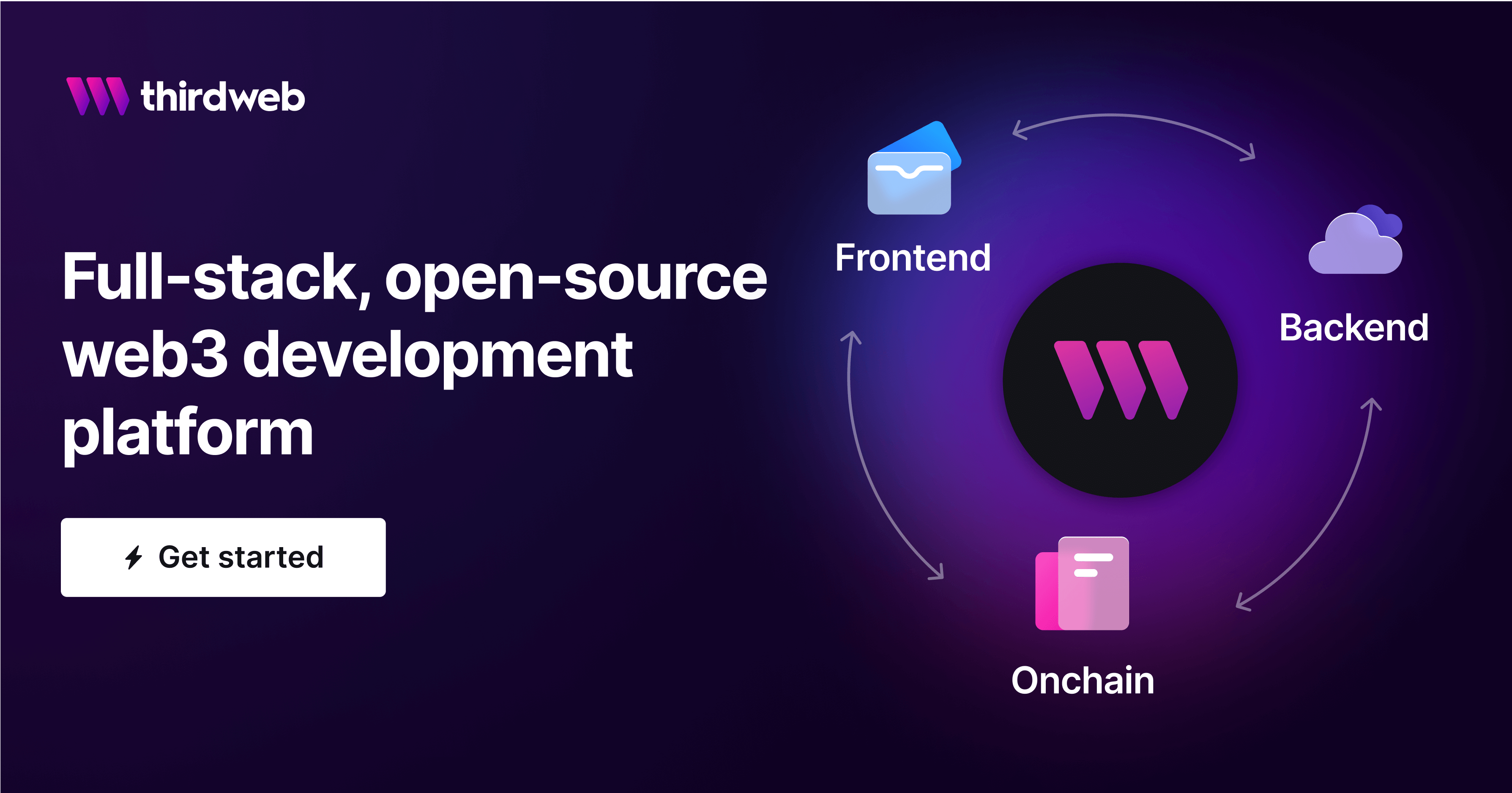Which zkEVM is Best? The Ultimate Guide
Comparing Polygon zkEVM, zkSync Era, Linea, Scroll, & Taiko — which is best?
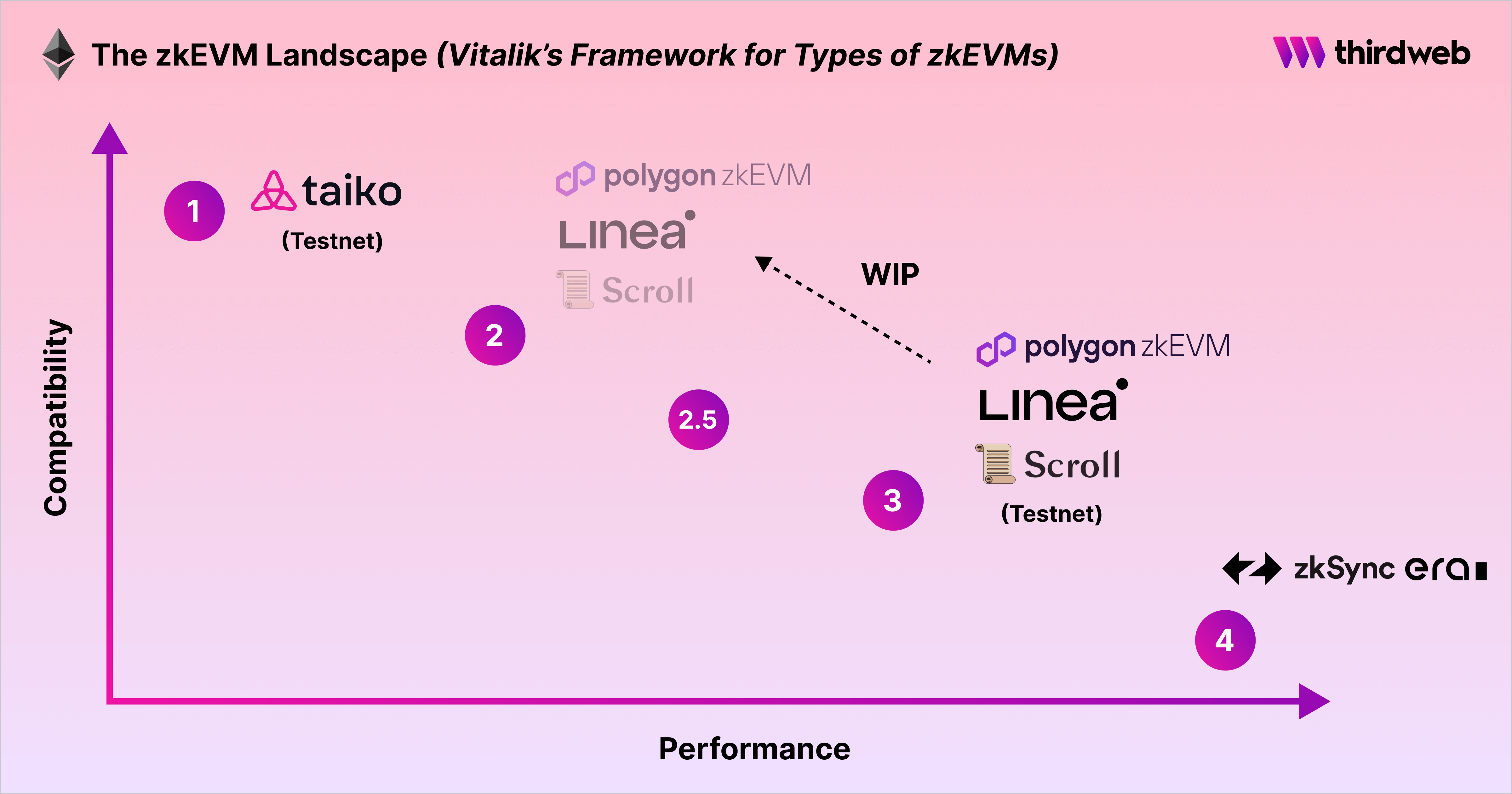
zkEVMs are bringing the blockchain to the masses — increasing scalability while maintaining security & decentralization.
But as the race to scaling Ethereum heats up, new scaling solutions are emerging left & right. With so many options, which one is best?
We compared Polygon zkEVM (+ 2.0), zkSync Era, Linea, Scroll, & Taiko.
Here's your ultimate guide to zkEVMs — and which one you should choose:
What is a zkEVM?
zkEVMs are Layer 2 networks that process transactions in batches & post validity proofs back to the Ethereum blockchain.
They combine zero-knowledge proofs (zk) and EVM-compatibility (EVM) to process transactions on Layer 2 networks — reducing computational load on Ethereum (the L1) & increasing scalability without sacrificing security or decentralization.
But not all zkEVMs are the same:
Types of zkEVMs
Vitalik Buterin has a great framework that showcases the costs & benefits of each — from Ethereum-equivalent (Type 1) to EVM-compatible (Type 4).
The main trade-off is EVM-compatibility vs. performance:
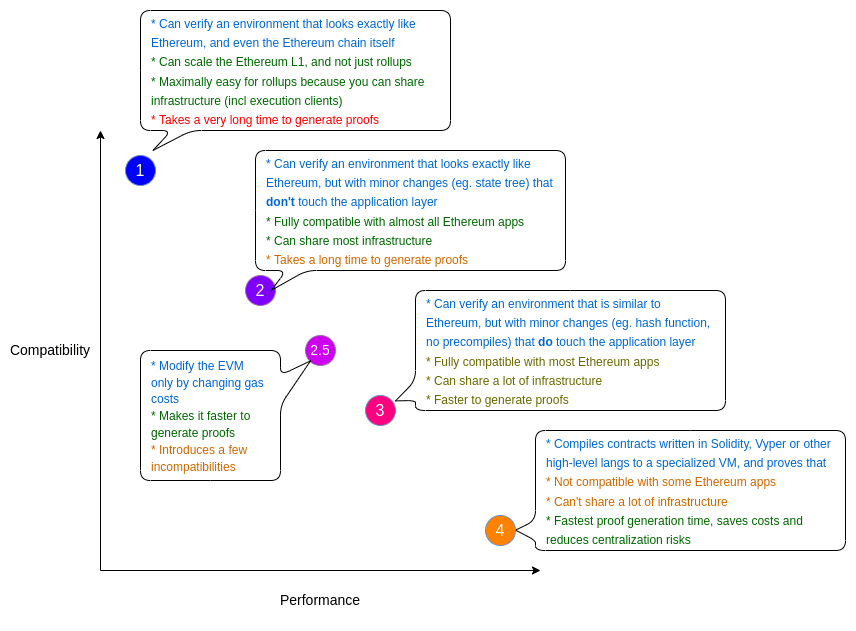
Here's a summary of the above:
- Type 1 (fully Ethereum-equivalent): Perfect compatibility with Ethereum, but lower scalability
- Type 2 (fully EVM-equivalent): Perfect equivalence at the VM level, improved but still lower scalability
- Type 2.5 (EVM-equivalent, except for gas costs): Equivalence at the VM level + better scalability, but not compatible with all dApps & tools (although most)
- Type 3 (almost EVM-equivalent): Easier to build + better scalability, but but not compatible with all dApps & tools (although most)
- Type 4 (high-level-language equivalent): Easiest to build + highest scalability, but less compatibility with dApps & tools
As you can see, each of the above has its pros & cons — and so all of the most popular zkEVMs vary in terms of which category they fall into, and which one they're striving to become.
Polygon zkEVM vs. zkSync Era vs. Linea vs. Scroll vs. Taiko: Which is best?
zkEVMs are considered to be the ‘holy grail’ of scaling solutions, and the potential answer to the blockchain trilemma.
This is why the following are all building their own zkEVM networks (among many others):
- Polygon (zkEVM + 2.0)
- zkSync (Era)
- Consensys (Linea)
- Scroll (zkEVM)
- Taiko
But how are they all different from each other? And which one is best?
Let's break them down.
1. Polygon 2.0 (zkEVM Validium)
In June 2023, Polygon Labs proposed to upgrade Polygon PoS to a zkEVM validium.
Polygon PoS boasts a strong ecosystem, with:
- $2B+ TVL (onchain assets)
- Tens of thousands of dApps
- ~2.5M transactions / day
Moving PoS to a zkEVM validium will preserve its network effects & low fees without affecting its existing apps, users, and developer experience.
But wait: doesn’t Polygon already have a zkEVM?
Polygon considers 2.0 (the zkEVM validium it proposes) to be a lower-cost, higher-throughput sibling to its Polygon zkEVM rollup.
Rollups leverage Ethereum to publish transaction data and verify proofs, inheriting its security & decentralization.
But there's a trade-off:
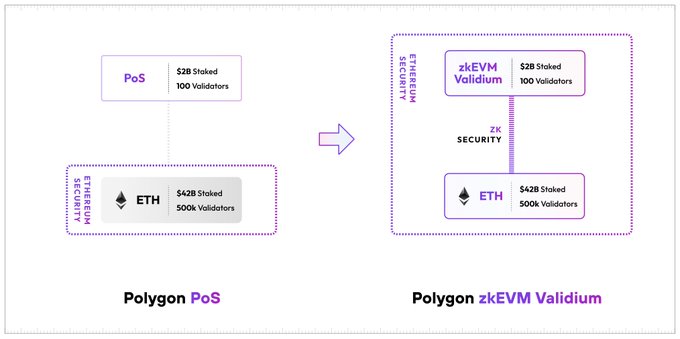
The disadvantage of rollups is that publishing transaction data to Ethereum is expensive & limits throughput.
Validiums offer similar security guarantees to rollups (ZK proofs guarantee the validity of transactions) but transaction data is made available off-chain.
This gives validiums two main advantages over rollups:
- Lower fees, since they don't consume expensive Ethereum gas (i.e. blockspace to store transaction data)
- Higher scalability, since rollups’ throughput is bounded by the amount of transaction data that can be published to Ethereum
The tradeoff with validiums is that they must ensure transaction data availability outside of Ethereum, which can be challenging.
But Polygon PoS’ existing set of 100+ validators can serve as a highly secure & reliable guarantee of data availability.
Build on Polygon:
But the transition of Polygon PoS into a zkEVM validium definitely begs the question: Why use Polygon zkEVM? What's going to happen to it?
2. Polygon zkEVM (Rollup)
Polygon zkEVM Polygon zkEVM is a Type 3 zk-Rollup.
It aims to be EVM-equivalent — meaning greater scalability while working with existing Ethereum tools & clients (by preseving EVM opcode compatibility).
Currently, Polygon PoS (2.0) and Polygon zkEVM rollup are two public networks of the Polygon ecosystem.
That would remain the case after the upgrade: one as a rollup and the other one as a validium.
But why not just deprecate Polygon zkEVM?
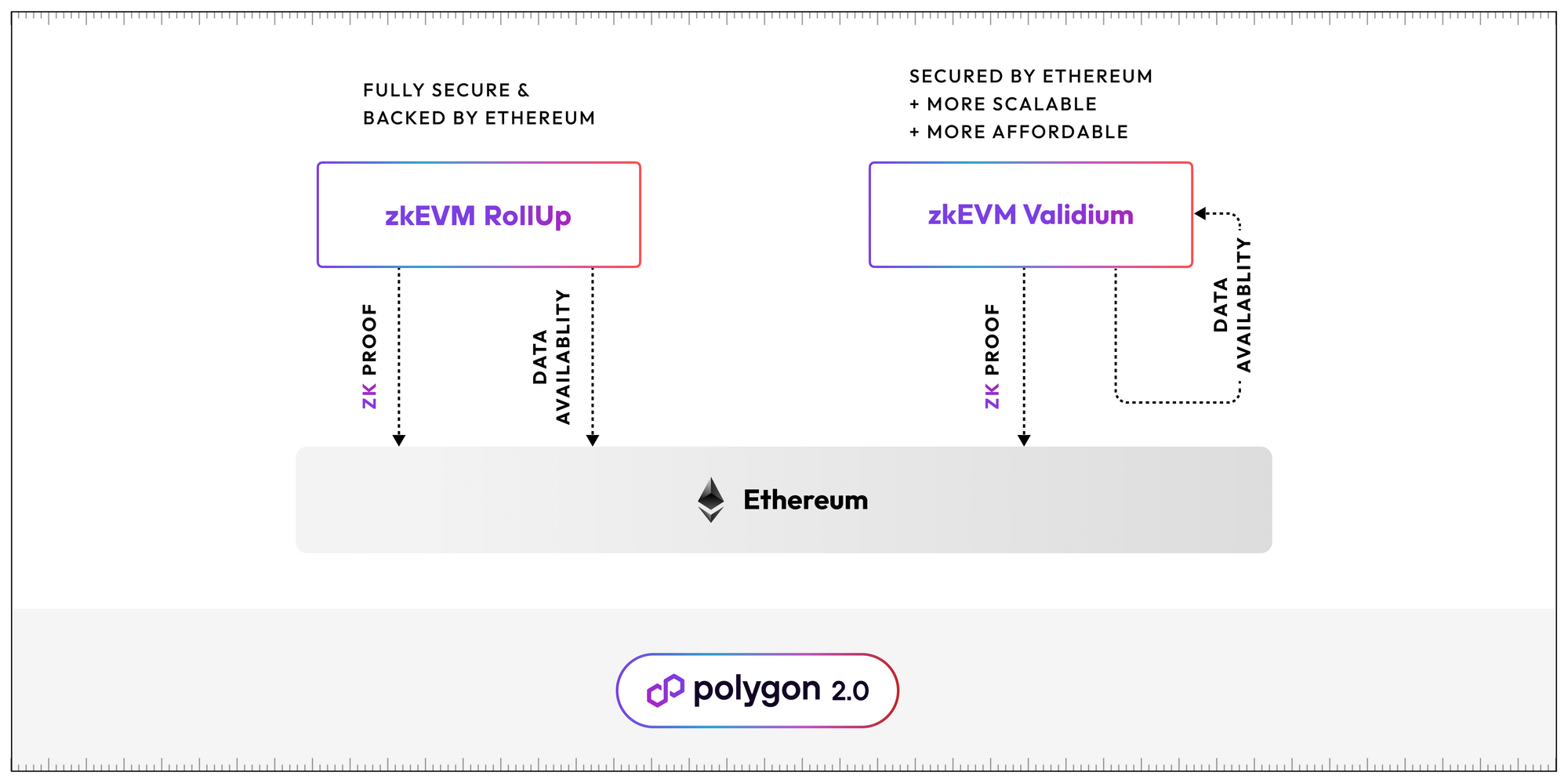
Polygon 2.0 and Polygon zkEVM complement each other:
- Polygon zkEVM (the rollup) has slightly higher fees & less throughput, but offers the highest level of security. This is most suitable for apps that process high-value txs (e.g. DeFi).
- Polygon 2.0 (the zkEVM validium), on the other hand, will offer the highest scalability. This is most suitable for apps with high transaction volume that require low fees (e.g. Web3 Gaming, Social)
Polygon zkEVM's mainnet launched in March 2023, with ~$54M TVL currently on the network.
Build on Polygon zkEVM:
3. zkSync Era
zkSync Era is currently a Type 4 zkEVM, though it may add compatibility for EVM bytecode over time.
Built by Matter Labs, Era (its mainnet) went live in March 2023 — now boasting ~$450M TVL and 27M transactions in the past month.
zkSync Era comes with native ECDSA support, Solidity 0.8.x compatibility, and Web3 API parity.
Instead of aiming for EVM equivalence, zkSync aims for speed in proof generation via their custom VM. It supports Ethereum cryptographic primitives natively, simplifies testing with a Hardhat plugin, and improves UX with native account abstraction.
zkSync Era uses its LLVM compiler, turning code from Solidity, Vyper & Yul into executable code on zkSync VM with future plans for Rust & C++ compatibility. It also has a robust L1-L2 contract messaging system, helping developers pass data between Ethereum & contracts on zkSync.
The upcoming zkPorter integration in zkSync will give users the option to choose between:
- A high-security zkRollup account w/ a 20x fee reduction vs. Ethereum
- A zkPorter account w/ stable transaction fees & a different security model, allowing for flexible user experiences
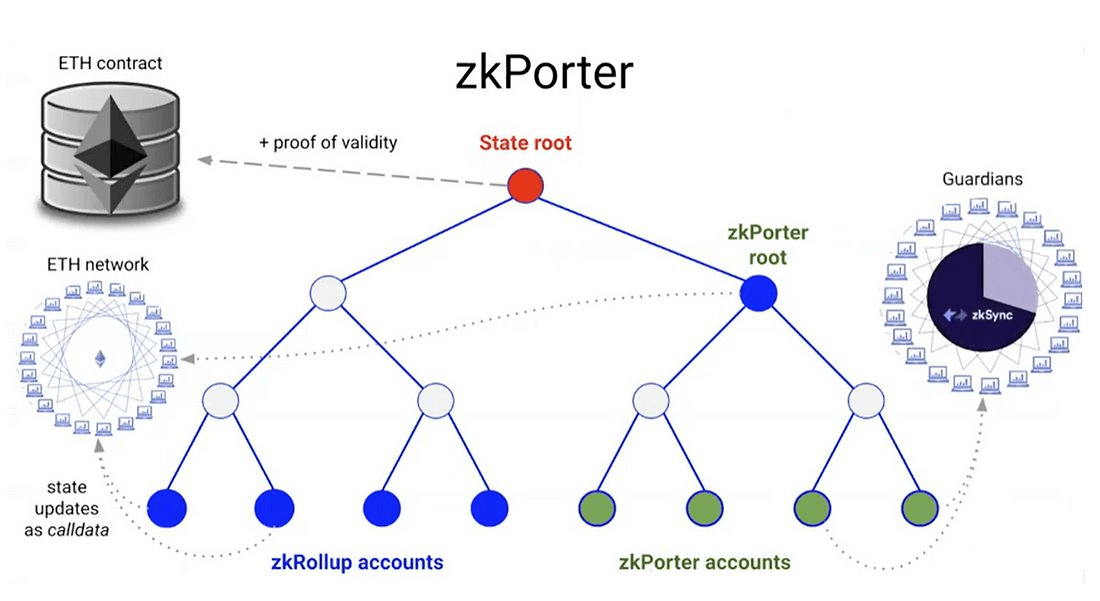
For data availability, zkSync Era publishes state diffs rather than transaction inputs — providing data compression & integration with zkPorter.
As the only Type 4 on this list, its custom VM enable certain features (& higher scalability) on zkSync Era.
For example: zkSync Era supports account abstraction natively by using their custom-built VM, enhancing the developer experience. But EVM-equivalent chains are unable to support AA natively — they do so via Ethereum’s ERC-4337.
The trade-off with a Type 4 zkEVM is lack of compatibility — requiring tweaks to the development process to build apps on zkSync.
But with built-in zkSync support, anyone can use thirdweb to get the same developer experience as other EVM chains!
Build on zkSync:
4. Linea
Built by ConsenSys (creators of MetaMask, Truffle, & Infura), Linea is currently a Type 3 zkEVM.
With native MetaMask wallet & Truffle developer toolkit integrations, its Alpha Mainnet launched in July 2023 & has already amassed $50M TVL.
Linea's uniqueness lies in its ability to execute unaltered, native bytecode in accordance with the Ethereum VM specification. Its goal is to deliver a Type 2 zkEVM in the future, ensuring near-complete compatibility with Ethereum while maintaining scalability.
Linea does not use transpilers or custom compilers. It directly takes compiled bytecode of Solidity to generate zk proofs for smart contracts, reducing the risk of bugs & hacks. For users, this means Ethereum-like security with much lower transaction costs.
Build on Linea:
5. Scroll zkEVM
Scroll is a zk-Rollup on Ethereum, currently a Type 3 zkEVM with plans to move to Type 2.
Its long-term goal is to prioritize EVM-compatibility & decentralization over fast ZKP generation, thus moving to a Type 1 zkEVM.
A successful Type 1 is the ultimate form of EVM-compatibility, decentralization, & scalability — essentially replicating Ethereum L1. But as we've seen from Ethereum itself, this is much more difficult to achieve.
Currently a Type 3 zkEVM, Scroll’s alpha testnet is available to the public.
Build on Scroll:
6. Taiko
Similar to Scroll, Taiko is a generalized zk-Rollup that aims to be a Type 1 native zkEVM.
Taiko is taking a different approach from Scroll towards becoming Type 1, prioritizing decentralization over speed from the get-go:
- Scroll is incrementally enhancing EVM-compatibility (starting as a Type 3 testnet) & decentralizing its sequencers + provers at mainnet launch.
- Taiko is decentralizing these components & optimizing for max EVM-compatibility from the beginning — despite slower ZKP generation.
Taiko’s Type 1 testnet is currently available to the public.
Build on Taiko:
Concluding thoughts: Are zkEVMs the future of Ethereum scaling?
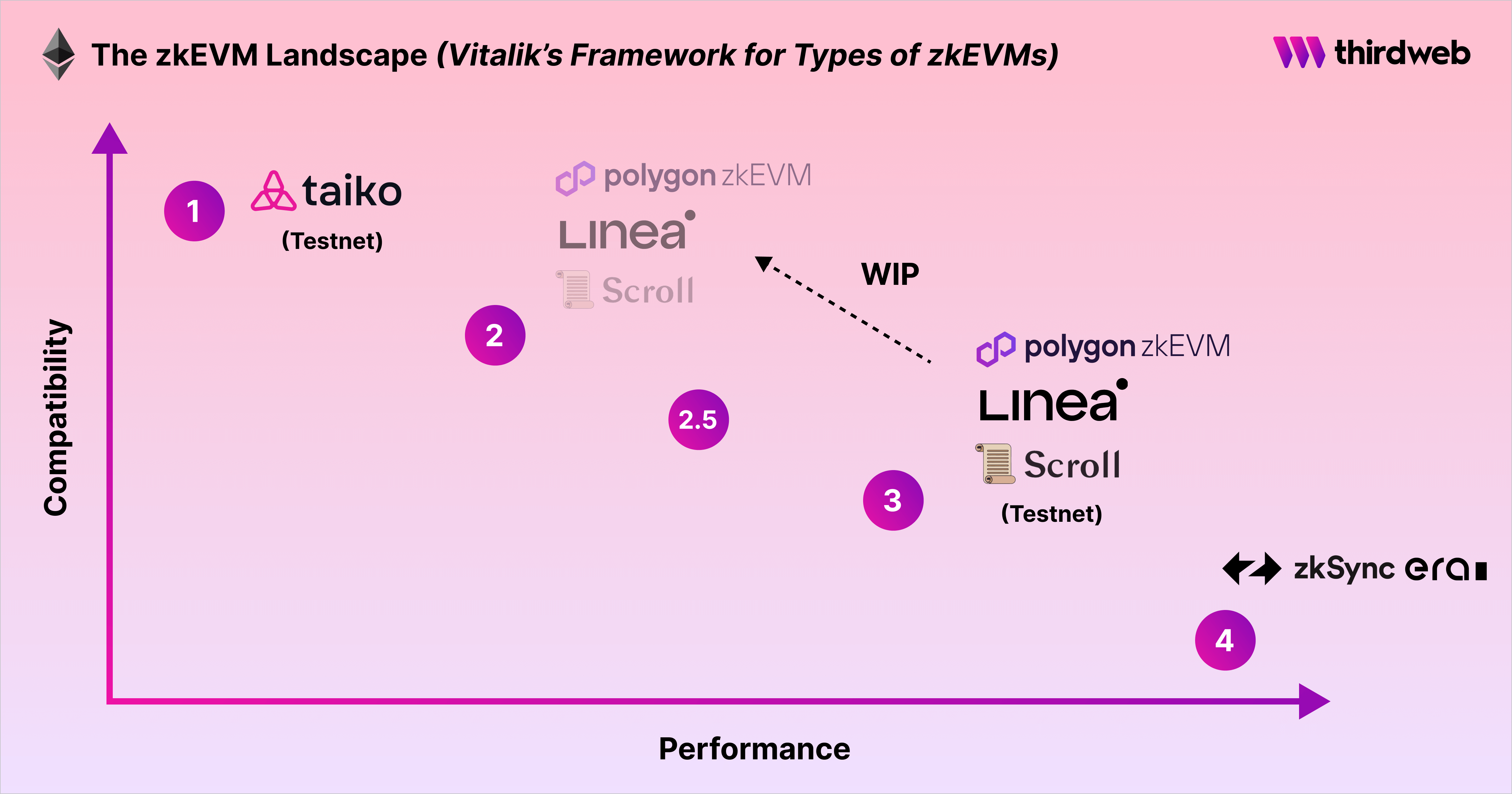
Using Vitalik’s framework, all of the above zkEVMs can be categorized as follows:
- Taiko: Type 1 (Testnet live)
- Polygon zkEVM: Type 3 (Mainnet live + plans to move to Type 2)
- Linea: Type 3 (Mainnet live + plans to move to Type 2)
- Scroll: Type 3 (Testnet live + plans to move to Type 1)
- zkSync Era: Type 4 (Mainnet live)
All in all, L2 development & adoption is key to Ethereum’s future + solving the blockchain scalability problem. Every zkEVM offers unique advantages & faces distinct challenges, but they all playing a critical role in enabling an accessible web3 ecosystem.
We hope this blog helped you understand the most popular zkEVMs, how they compare to each other, and which one is most suitable for you.
If you have any questions, join 40,000+ other builders in our Discord community or reach out to the team directly for more information on how to get started.
And if you're ready to start building: You can deploy any pre-built, customizable smart contract & build a dApp on any of the above zkEVMs! Simply search for your chain of choice & start building:
